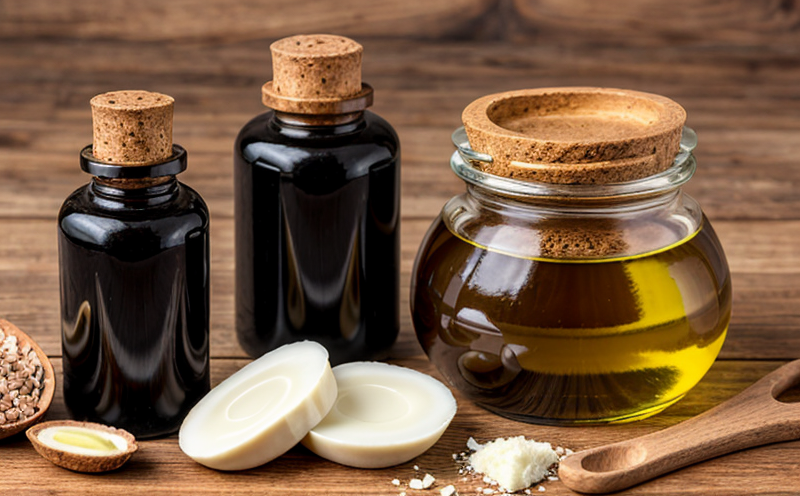EN 16087 Peroxide Value Testing in Oils
The Peroxide Value (PV) test, as defined by ISO 16087-2:2014 and EN 16087-2:2014, is a critical analytical procedure for assessing the oxidative stability of fats and oils. This test measures the amount of peroxide formed during lipid oxidation, which indicates how rapidly the oil or fat can degrade due to exposure to oxygen in air. High PV values suggest greater susceptibility to rancidity, making this test essential for quality assurance and compliance with international standards.
Quality managers, procurement officers, and R&D engineers rely on accurate PV testing to ensure product integrity and shelf life. This service supports the food & feed industry by providing data that can be used in formulation adjustments or as a basis for compliance verification. For instance, in the context of food safety regulations like EU Feed Labeling Regulation, PV values are key to ensuring product quality and consumer safety.
The test involves several steps: first, a sample of oil or fat is prepared according to the standard procedure. Then, it undergoes extraction with an organic solvent followed by titration to determine the peroxide content. The result is reported in milliequivalents per kilogram (meq/kg).
| Step | Description |
|---|---|
| Sample Preparation | The sample must be representative of the batch and free from contamination. |
| Extraction | Aqueous sodium thiosulfate solution is added to extract peroxides into an aqueous phase. |
| Titration | An iodine solution is titrated against the extracted peroxide using starch as an indicator. |
The PV test is crucial for several reasons. It helps in detecting early signs of oxidation, which can lead to off-flavors and reduced nutritional value. For instance, in dietary supplements containing fish oil, a high PV might indicate spoilage that could compromise the product's efficacy.
Moreover, this service supports regulatory compliance by ensuring products meet specific PV limits set by authorities such as the FDA and the European Commission.
Why It Matters
The Peroxide Value testing is a fundamental tool for ensuring product quality and safety in the food & feed industry. By measuring the oxidative stability of oils and fats, this test provides critical insights into the shelf life and quality of products. This information is invaluable for quality managers who need to maintain consistent standards across production batches.
- Early detection of oxidation issues
- Compliance with international food safety regulations
- Enhancement of product shelf life and stability
- Informed decision-making in R&D processes
- Precision in procurement by ensuring suppliers meet quality standards
The results from this test can inform formulation adjustments, storage conditions optimization, and supply chain management. For instance, if a batch shows an unexpectedly high PV, corrective actions such as adjusting the packaging or refrigeration temperature might be necessary.
Scope and Methodology
The scope of this service is to provide accurate Peroxide Value testing in accordance with ISO 16087-2:2014 and EN 16087-2:2014. The methodology involves the following steps:
| Step | Description |
|---|---|
| Sample Collection | Select a representative sample from the batch, ensuring it is free from contamination. |
| Extraction | Add aqueous sodium thiosulfate to the sample and shake gently until clear. |
| Titration | Determine the PV by titrating iodine against the extracted peroxide using starch as an indicator. |
| Reporting | The final result is reported in milliequivalents per kilogram (meq/kg). |
The accuracy of this test relies heavily on precise sample preparation and adherence to the standard procedure. Any deviation could lead to inaccurate results, which might mislead quality control decisions.
Why Choose This Test
Compliance with international standards: Ensures adherence to ISO and EN specifications.
Precision in quality control: Provides reliable data for batch-to-batch consistency.
Early detection of oxidation: Helps identify issues before they affect product integrity.
Supports regulatory compliance: Meets the stringent requirements set by food safety authorities.
Informed decision-making: Enables stakeholders to make data-driven decisions about formulation and storage.
Precision in procurement: Ensures suppliers meet quality standards, reducing risks of substandard materials entering production.
The reliability of this test is further enhanced by our state-of-the-art equipment and highly skilled personnel. Our laboratory adheres strictly to the specified procedures, ensuring accurate results every time.





